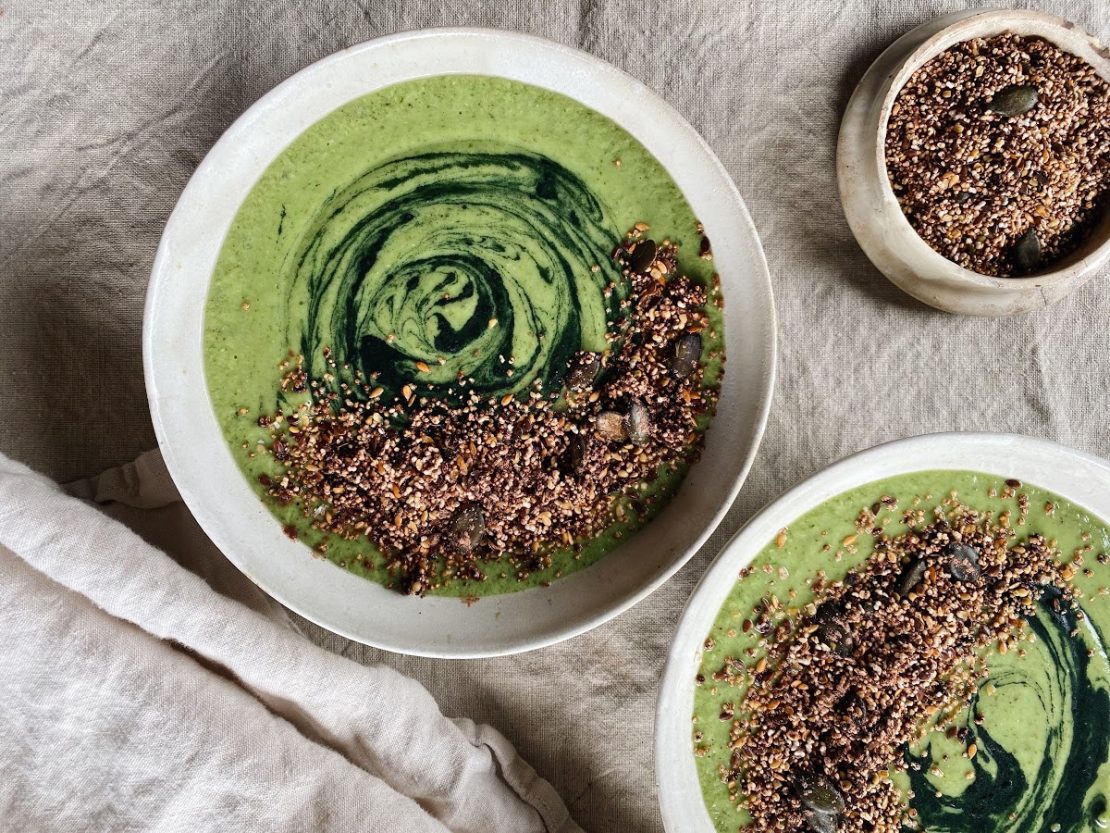
An Anti-Inflammatory Approach to Eating + a Wild Greens Smoothie Recipe
Whenever the topic of nutrition is brought up, the conversation usually becomes very passionate. Since we all need to eat, nutrition concerns all of us. As a nutrition and lifestyle practitioner, I am passionate about helping people learn the unique language of their bodies so they can discover what’s helping or heeding them on their journey to health and wellness. We require food in order to derive the energy, structural materials, and regulating agents needed to support the growth, maintenance, and repair of all our body’s cells, tissues, and organs. An anti-inflammatory approach to eating can help maintain balance in the body, by providing the essential nutrients daily in the form of plant-rich vibrant foods, and includes my go-to wild greens smoothie recipe, which contains chlorophyll-rich greens: the spark plugs of life.
The Age of Inflammation
The Centers for Disease Control and Prevention estimates that a shocking 60 percent of American adults have a chronic (inflammatory-driven) disease, and 40 percent have two or more chronic diseases – an incredibly high percentage (“Chronic Diseases in America,” 2019)! Especially when 80 percent of most chronic diseases (heart disease, cancer, autoimmunity, diabetes) are largely preventable and manageable with lifestyle choices ((Willett et al., 2011). Nutritional deficiencies impair balance, equilibrium and may eventually lead to disease. Nutrients are required for the proper functioning of every single system in the body (“2015 – 2020 Dietary Guidelines”, n.d.). Food delivers detailed instructions to every cell, helping it to renew, repair, and heal. Real, natural food, especially plant-based food, sends messages and materials to heal inflamed cells and even switch on healing functions of our genetics (Choi & Friso, 2010). This is epigenetics working for us rather than against us!
If our habitual inputs constantly signal the body to produce inflammatory reactions we can start to feel unwell, both from the unhealthy food, or unbalanced diet, and from the byproducts of inflammation. It stands to reason, and common experience, that eating processed foods, refined and artificial sugar, chemicals, additives, trans fats, and MSG, could make a body become inflamed. These foods turn on inflammatory responses, potentially causing whole body inflammation that may lead to digestive issues, autoimmune conditions, hormone imbalances, anxiety and depression, unrelenting fatigue, and insomnia.
Sadly, we are in the age of inflammation, and inflammation is insidious and starts brewing in the body long before any disease becomes noticeable, not to mention diagnosable. The same is true for other chronic inflammatory conditions like diabetes and heart disease. We don’t manifest disease overnight, and the harsh reality is that we all harbor inflammation whether that is the healthy ebb and flow of inflammation, or mild chronic inflammation ie. subclinical, or diagnosable chronic inflammation in specific systems. Some inflammation is a functional part of life, response to injury or inflection, and part of defense and repair. Chronic inflammation, out of balance and unchecked can eventually lead to disease.
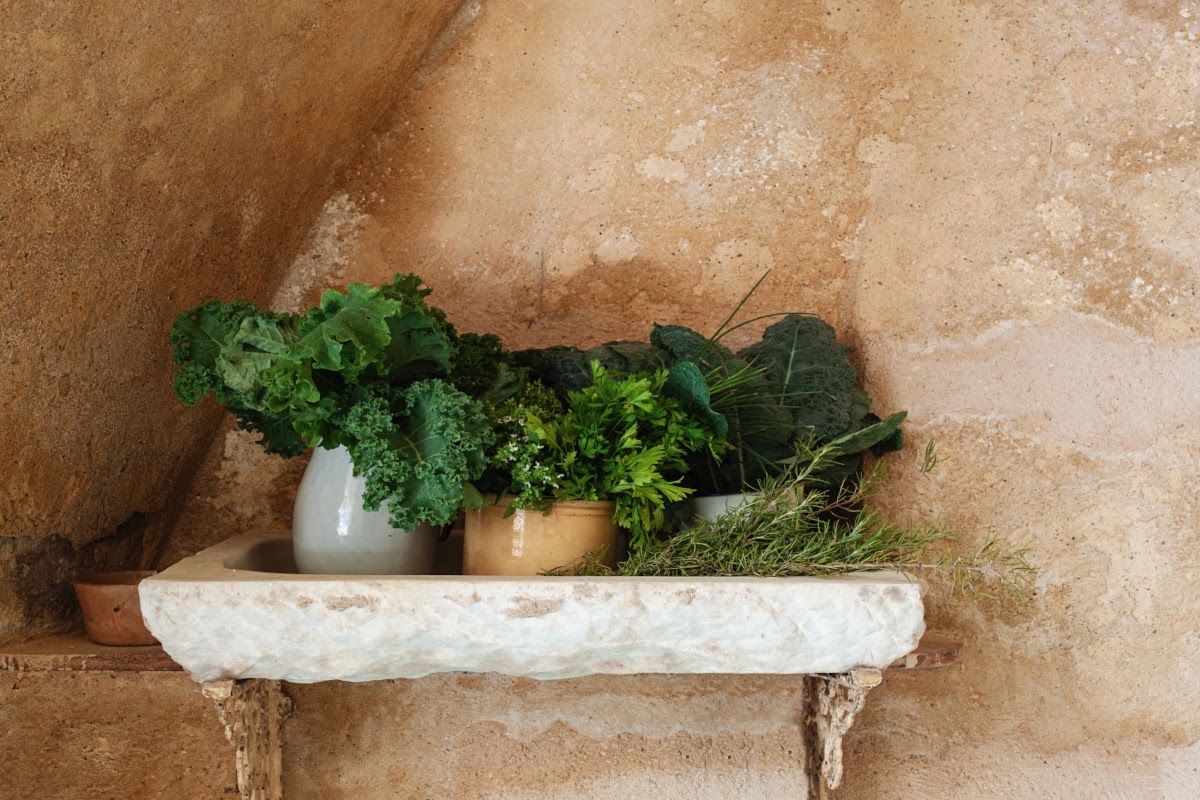
The Anti-Inflammatory Approach
What we eat and how we live are significant influences on wellness or lack of it, and I believe that both facets are fundamental to reducing inflammation in the body. Taking an anti-inflammatory approach to eating requires removing inflammatory foods from our diet and adding healing, detoxifying foods, such as a daily greens smoothie recipe, which have the power to support your body in a profound way, and in return it will give you a profound feeling of wellness.
The power of getting rid of the bad stuff and putting in the good stuff allows the body to find balance, even if you don’t have a diagnosed chronic condition. How and what you eat is fundamental to your overall health and wellness. Nutritional therapy has, is, and will remain to be an essential method to bring about change, and it’s more important now than ever before.
Interest in nutrition is booming. From cookbooks to cooking shows, to ever-new diet trends and countless self-help books, what we eat has garnered a degree of attention that was unimaginable thirty years ago. And yet, in many ways, we’ve never been more confused. There is so much noise out there in the health and wellness arena that many of us have become apathetic towards our approach to eating. The joy of eating has been replaced with confusion and overwhelm around food, and we’ve lost touch with our intuition of what our body needs in order to thrive.
Many people tell me they don’t even know what is healthy anymore, because for years now, media reports on nutrition have been contradictory. One day fat is bad, the next day it’s good. One day we’re supposed to avoid carbohydrates, but then we are advised to eat whole grains to prevent cancer. Many of us have become addicted to processed food and may have developed nutrient deficiencies. Most processed foods not only have a net-zero nutritional value, they also contain compounds that require nutrients to metabolise or neutralise them, and it becomes a vicious circle. Navigating the conflicting waters of what foods to eat can indeed be overwhelming.
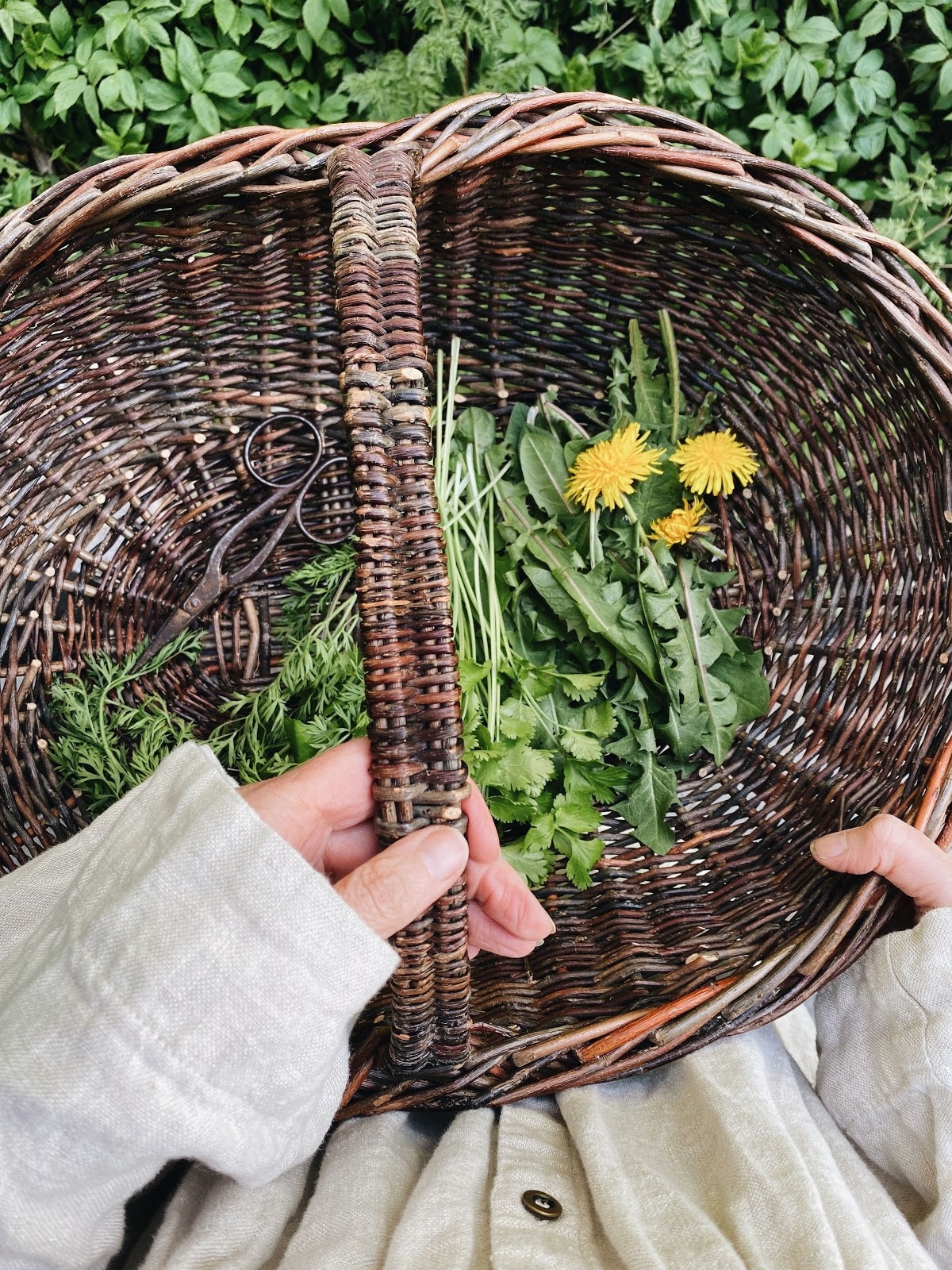
The Major Factor of Disease
The major factor of disease is chronic inflammation. Holistic health looks to the cause of any imbalance. The first place to start is to put out the fire of inflammation by eating the foods and following the lifestyle practices that help our body to detoxify and cool off inflammation. This is when miracles start to happen.
“Let food be thy medicine and medicine be thy food,” the claim attributed to Hippocrates, the influential ancient Greek physician philosopher, was used to emphasise the important role nutrition plays in our overall health and wellbeing. Western medicine has fallen away from a philosophy of food as fundamental. Yet there is evidence that common conditions from cancer to autoimmune disease, and chronic fatigue and headaches are influenced by diet.
This is incredibly frustrating and disillusioning, but until we move towards a more integrative approach to whole body or holistic medicine, it’s unlikely to change soon. Until then, I encourage you to take a stand for your own health. Put yourself at the centre of your wellness journey, and educate yourself in the ways to support your body to heal. Food matters, lifestyle matters, and each and every one of us has the power to change the way we live and the course that our journey to health and wellness will take.
The wonderful thing about nutritional therapy is that it’s totally within our power and capability to make the changes. Eating optimally in and of itself is not exhausting, we don’t have to spend endless time, nor, if we do it right, extra money. The only things that really matter are how and what we eat. I know this is a hot topic for many, but I truly believe it’s totally possible to change our taste preferences – as this is something that happens naturally over the course of our lifetime.
The reality is that most of us don’t eat to stay healthy – we eat because the things that we’ve gotten used to due to our culture and upbringing taste good to us. Most often, our culture and our social environment are responsible for how tastes are formed. In that sense, changing nutritional behavior is both difficult and easy. The key to creating optimal health is to provide the right conditions for your body and soul to thrive.
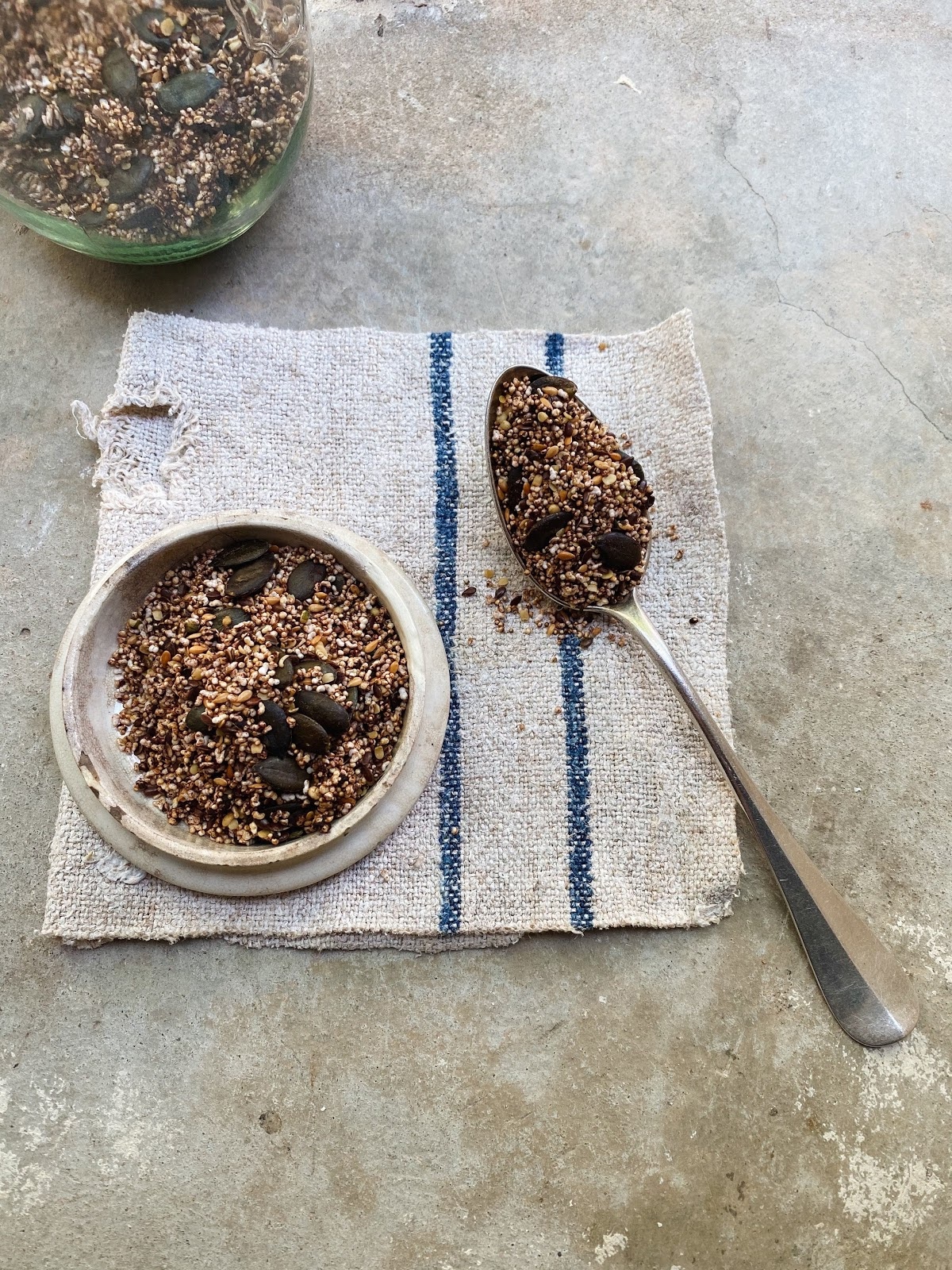
Food as Medicine
My approach to living optimally is food first. The key to creating optimal health is to provide the right conditions for your body to thrive by eliminating foods that create toxicity and inflammation and replacing those foods with detoxifying, nutrient-rich, anti-inflammatory foods. So, how do you start?
I use a system of areas to focus on called the “Four-”Rs” or “4Rs” to coach clients who wish to gently shift their diets for the better. Each “R” stands for a category of food to either remove or replace.
I recommend eliminating each of the 4 categories of items in the 4 Rs one at a time, rather than all at once, and adding in more of the 4 Rs to Replace into your daily regime. I find that for many people, drastic changes all at once are often overwhelming and unsustainable, so I prefer this ease-into-it approach. Wellness shouldn’t be stressful. There is always magic and momentum to be found when we lean into new things, especially when we start to feel the positive effects.
The 4 Rs -Remove:
- Remove refined, fake, and all added sugars, especially white and brown cane sugar, fructose corn syrup, refined stevia products, xylitol, artificial sweeteners, concentrated fruit juice, and anything ending in -ose (dextrose, maltose, sucrose, fructose, etc).
- Remove gluten. Gluten is a protein component of many grains including wheat, barley, rye, spelt, kamut, that may be inflammatory to many. Gluten is also found in many sauces and packaged items that you would not expect to find it in, ie that are not otherwise wheat or grain related, so you need to read food labels carefully.
- Remove dairy products made of cows milk, which contain lactose (milk sugar) and beta-casein (A1 protein) including milk, yoghurt, cheese, cream, butter, etc.
- Remove inflammatory oils, especially corn, soy, canola, grapeseed, safflower, sunflower, and vegetable oils, as well as trans fats (anything that says “partially hydrogenated,” such as margarines and “buttery spreads”), and most packaged foods containing any fat.
The 4 Rs – Replace:
- Add in whole, healthy foods; plenty of vegetables and leafy greens, moderate amounts of whole fruit, beans, lentils, whole grains, pseudo grains (quinoa, buckwheat, amaranth), nuts, and seeds.
- Drink green smoothies – chlorophyll-rich and full of nutrients to support liver detoxification. See my go-to wild greens smoothie recipe below.
- Make Miracle Broth – an easy plant-based broth with amazing, alkalising, and anti-inflammatory properties that you can sip on throughout the day. Read more and get the recipe inside the 3 Sources Membership.
- Stay hydrated with clean filtered water – aim for 2-2.5 liters each day.
Benefits and Possible Side Effects of the 4 Rs
Many people experience positive effects quite quickly, such as improved digestion and better sleep. After the first day or two, you may feel a little tired or even have some mild flu-like symptoms, such as body aches or generally feeling under the weather. This is merely an indication that your body is beginning to recalibrate. These symptoms should disappear within 24 hours or so. Any sugar cravings should have disappeared because the 4 Rs of Removing avoids refined sugars, which cause sudden swings in blood sugar.
After the first couple of weeks, you should notice a marked increase in energy levels. This is because you will have eliminated dietary causes of inflammation and replaced these with whole, replenishing and nourishing foods. By the end of the fourth week, your immune system will have had the chance to start renewing itself and the process really begins to kick in. If you’re suffering from a more serious chronic condition, you may also notice even greater improvements.
On top of this, it’s important to include some daily lifestyle practices to support you on your wellness journey. Practicing self-care is not a luxury, it’s essential. Holding and regulating yourself ultimately means you can be of better service to yourself, to others, and to the planet. Adding doses of self-care into each day will recharge, regulate and regenerate your whole being. Practicing breathwork or meditation, keeping a journal, getting outside in nature, and daily movement are some examples of self-care, but you can find every day and seasonal rituals and resources here.
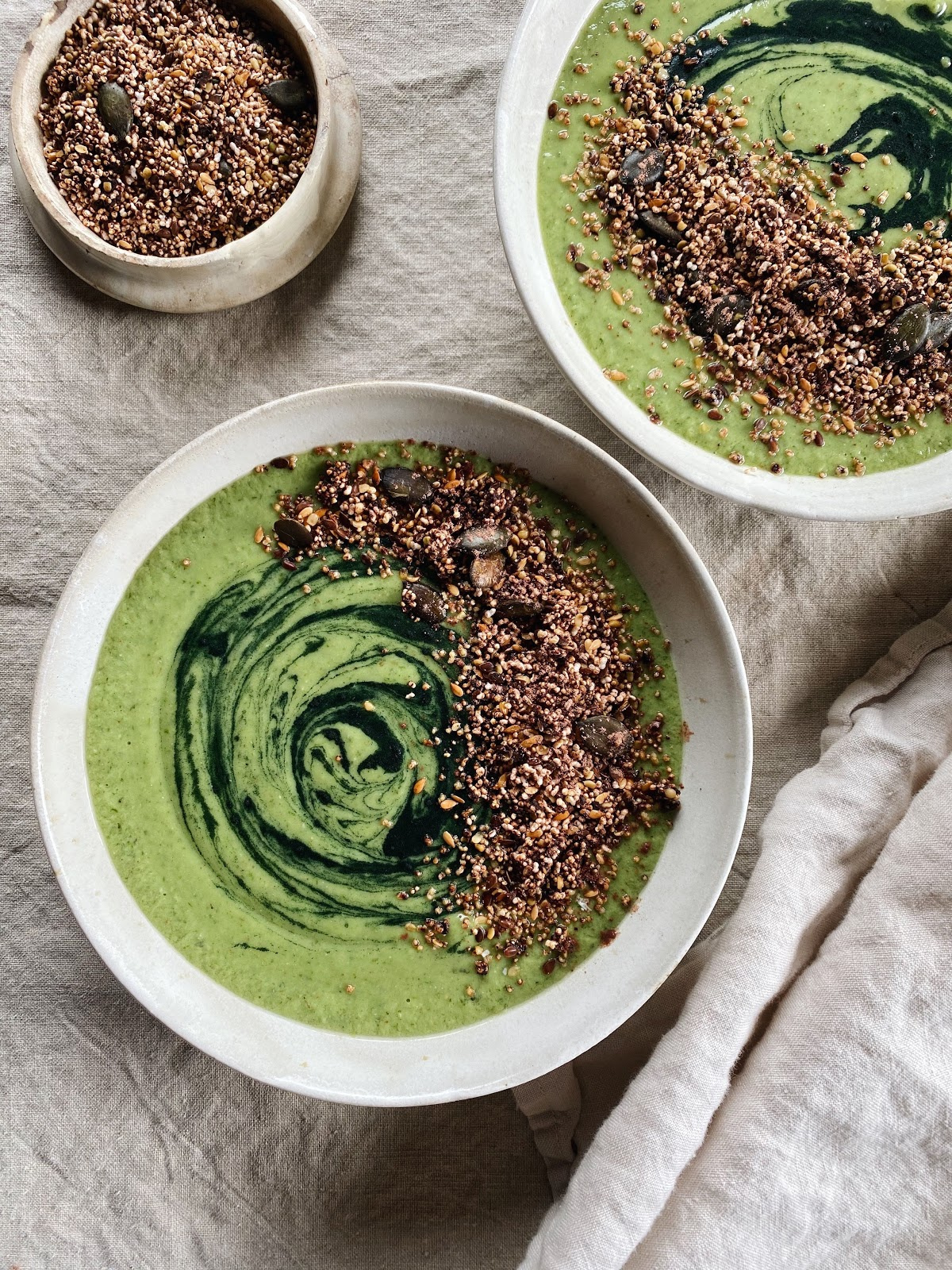
The Power of a Daily Greens Smoothie Recipe
Greens are our secret weapon to creating balance in the body and match this purpose possibly better than any other food. When blended, the nutrients from greens are absorbed more efficiently and provide many more nutrients, including vitamins, amino acids, carbohydrates, essential fatty acids, minerals, and trace elements than other foods (Boutenko, 2010). On top of this, greens contain liquid sunshine: chlorophyll, which I like to say bathes our internal organs in sunshine, cleansing and supporting us from the inside out. Supplying all of these alkalising and anti-inflammatory nutrients and life-giving substances to the body is critical for good health. By drinking a greens smoothie recipe, we support homeostatic balance to our bodies in the most optimal way.
This wild greens smoothie recipe contains chlorophyll which supplies alkalizing and anti-inflammatory nutrients for good health. Yield: 2 servings.
1 ½ cups coconut milk (or coconut water) To serve: Puffed amaranth and cacao granola and extra cinnamon for dusting, if desired.Wild Greens Smoothie Recipe
1 ripe avocado, chopped and frozen
1 banana, chopped
½ small pineapple, skin removed and cubed
½ -1 cup dandelion greens **
1 cup carrot tops (stems removed)
1 cup coriander leaves (cilantro)
½ cup freshly squeezed lime juice (about 3 limes)
1 tablespoon fresh ginger root, peeled and finely grated
1 tablespoon ground flax seeds
½ teaspoon spirulina or chlorella powder
½ teaspoon ground cinnamon
Pinch of pink Himalayan salt, or sea salt
** Note: can be substituted with spinach if not available
This granola is the perfect topping for the Wild Greens Smoothie Recipe, or for any smoothie for that matter! Yield: 1 jar.
½ cup amaranthPuffed Amaranth & Cacao Granola
½ cup raw pumpkin seeds
½ cup whole flax seeds
¼ cup hulled hemp seeds (hemp hearts)
50 grams unrefined coconut oil
30 grams pure cacao powder
30 grams pure maple syrup
Pinch of pink Himalayan salt, or sea salt
In Closing,
I encourage you to try an anti-inflammatory approach to eating for yourself. Think of it as an experiment and try to prove it to yourself. Take just one month to implement these changes to see just how powerful real, whole-food can be.
If you like this greens smoothie recipe, be sure to check out more of our smoothie recipes below:
Ginger and Pineapple Anti-Inflammatory Smoothie
Refreshing Basil and Mint Smoothie Combinations
Summertime Maca Smoothie
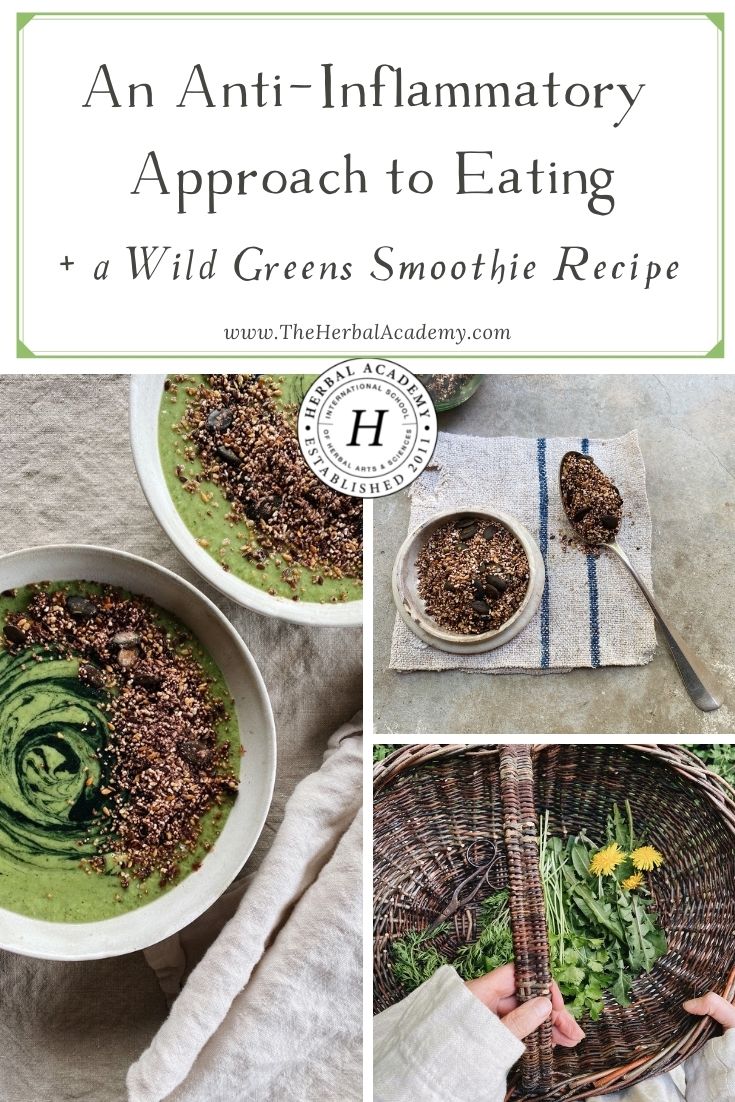
REFERENCES
Boutenko, V. (2010). Green for life. Berkeley, California: North Atlantic Books. “Chronic Diseases in America.” (2019). Retrieved from https://www.cdc.gov/chronicdisease/resources/infographic/chronic-diseases.htm
Sang-Woon Choi, Simonetta Friso. 2010. Epigenetics: A new bridge between nutrition and health. Advances in Nutrition, Volume 1, Issue 1, November 2010, Pages 8–16, https://doi.org/10.3945/an.110.1004
“2015 – 2020 Dietary Guidelines for Americans.” (n.d.). Retrieved from https://health.gov/our-work/food-nutrition/previous-dietary-guidelines/2015
Willett, W. C., Koplan, J. P., Nugent, R., Dusenbury, C., Puska, P., & Gaziano, T. A. (2011). Prevention of Chronic Disease by Means of Diet and Lifestyle Changes. Retrieved from https://www.ncbi.nlm.nih.gov/books/NBK11795/









